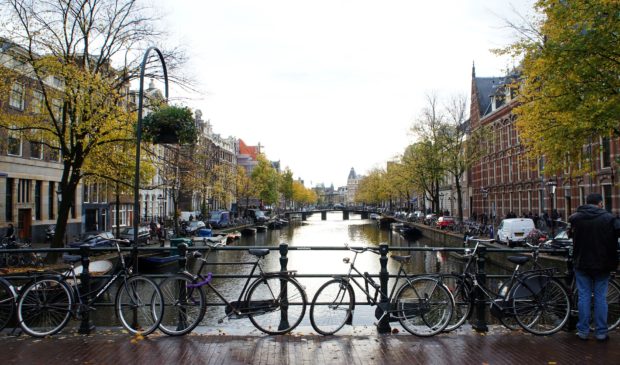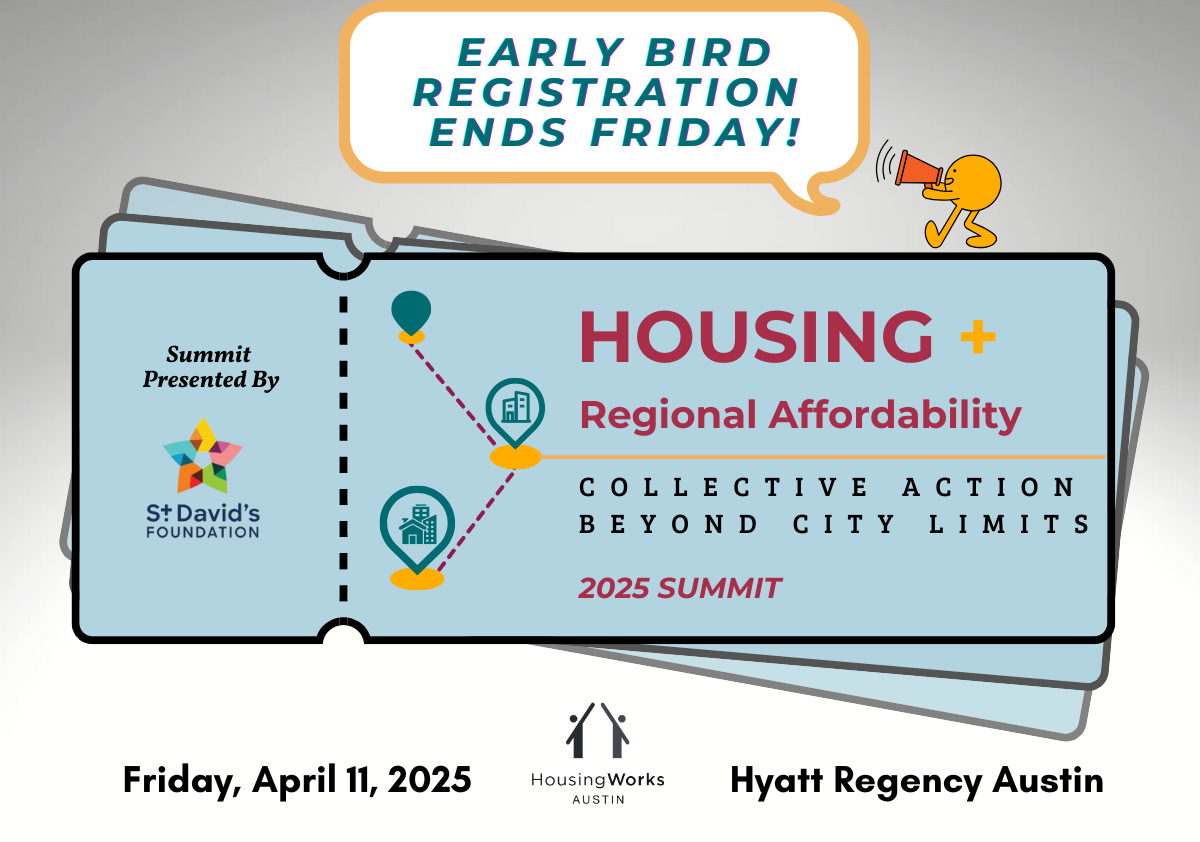Newsletter Signup
The Austin Monitor thanks its sponsors. Become one.
Most Popular Stories
- The Austin area won’t be seeing a lot of bluebonnets this year. Here’s why.
- SXSW shrinks as indie venues contemplate competitiveness
- Council members celebrate unanimous defeat of bill that proposed putting Austin under state control
- Eviction crisis spreads as affordability pressures worsen
- City pauses $10M in airport art over concerns local creatives were excluded
-
Discover News By District

The Netherlands offers critique and solution to Austin street design
Monday, March 25, 2019 by Ryan Thornton
Cutting traffic fatalities and getting people out of single-occupancy vehicles may seem like impossible tasks here in Austin, but it’s actually rather simple, says Billy Fields, associate professor of political science at Texas State University.
The solution, according to Fields, is to systemize street design to manage vehicle speed and separate vulnerable users like bicyclists when speeds go over a certain level, about 18 mph.
With all of the city’s talk about Vision Zero and multimodal infrastructure bearing little fruit so far, Bicycle Advisory Council Chair Kathryn Flowers asked Fields to talk to the BAC Tuesday evening to demonstrate that those goals are not as insurmountable or even as complicated as they may now appear.
Fields did not come up with his solution by imagining what theoretically could work. As a researcher of political science, his studies take him to cities across the globe where he observes and compares political systems in action.
Upon visiting the Netherlands for the first time and experiencing its multimodal street network, Fields said he had an awakening.
“I had been working in this space for 10 or so years before that, and all of a sudden I saw how you really create a system that’s seamless,” he said.
The reason the Netherlands has so few traffic fatalities and so many bicyclists per capita is because every street design follows a simple table that considers traffic speed and volume when determining how to accommodate and protect vulnerable users, Fields said. According to the table, bicycles and cars only share streets with speeds up to 12 mph. Depending on volume of through traffic, streets with speeds between 12 and 31 mph will have a bike lane, a paved shoulder, or a physically separated two-way cycle track. Lastly, nearly all streets with speeds north of 31 mph will feature a separated cycle track.
Fields, an Austin resident, contrasted this with the innumerable streets throughout the city with speeds above 31 mph where bicyclists are expected to ride in the street without even a bike lane and where pedestrians are pushed into the street because there is no sidewalk. He bemoaned the fact that simply walking or biking around Hyde Park (relatively safe and walkable by Austin’s standards) with his child has been a considerable challenge.
“When we first moved to Austin about eight years ago, walking in Austin, I had a 2-year-old at that point, and I felt completely uncomfortable,” he said. “It was terrible: You have beautiful weather all the time, but there are no sidewalks.”
The difference between street design in the Netherlands and in Austin, Fields said, is that engineers in the Netherlands take simple physics seriously when considering how vulnerable bicyclists and pedestrians will be on a street.
“People in the Netherlands have the same biological capacity as people in the United States if they get hit by a car,” he said. “We should use the same standards there if we are serious about Vision Zero and limiting the number of fatalities in the system.”
As has been mentioned by several city boards and commissions while discussing the Austin Strategic Mobility Plan this month, BAC alternate Chris Heathcott noted that the city’s street design standards appear to be primarily based on single-occupancy vehicle traffic modeling, with the safety and ease of bicycling and walking more of an afterthought.
Fields said the same was true of the Netherlands in the 1970s, when the cultural mindset began to change. In 1970, the Netherlands and the United States had almost the same rates of traffic fatalities per capita, but by 1980 the Netherlands had cut that number nearly in half while the U.S. lowered its own by about 12 percent. Since then, traffic fatalities have continued to steadily decrease in the Netherlands while the U.S. has essentially made no progress over the past decade.
According to Fields, the change began to take place when neighbors came together to combat traffic violence.
“The first thing they did is they brought their couches out into the street and they blocked the street off,” he said. “They just came out and they started building gardens (in the right of way).”
As a result, over the past 20 years the Netherlands has converted about 75 percent of its residential streets to shared zones with various traffic-calming structures and speed limits at or below 18 mph.
Amsterdam, for example, where 48 percent of work commutes are made by bicycle, was not always a utopia for cyclists, Fields said.
“Amsterdam became Amsterdam because people pushed really hard,” he said. “That’s the hard, unsexy work that’s required here.”
In an email with the Monitor, former Austin City Council Member Chris Riley, who has studied similar cultural shifts in cities like San Francisco, said Austin has lacked that political momentum to reach its own goals.
“There’s no mystery behind how to make our streets safer,” Riley said. “Other cities, including Amsterdam, have been demonstrating it for years; we’ve just lacked the collective will to make those changes here.”
Riley praised citizen-led demonstrations like Parking Day that have offered Austinites glimpses of a possible future, but noted that residents of other cities have made bigger, longer-lasting impacts with more drastic measures like installing barriers between bicycle and vehicle lanes.
As traffic fatalities continue to add up and awareness around climate change grows, Riley said, so will the number of people demanding safer streets.
“If the city takes those demands seriously, we have the opportunity to make changes that will save many, many lives,” he said.
Flowers concluded the discussion regretting that political and cultural challenges have led to some complacency in the BAC as it tries to find middle ground with the city. She said while it’s important to keep in mind the political and cultural environment of Austin, “it’s also important to remember what we can have.”
The Austin Monitor’s work is made possible by donations from the community. Though our reporting covers donors from time to time, we are careful to keep business and editorial efforts separate while maintaining transparency. A complete list of donors is available here, and our code of ethics is explained here.
You're a community leader
And we’re honored you look to us for serious, in-depth news. You know a strong community needs local and dedicated watchdog reporting. We’re here for you and that won’t change. Now will you take the powerful next step and support our nonprofit news organization?





